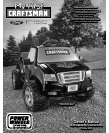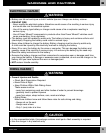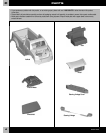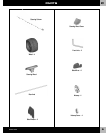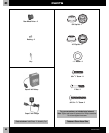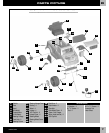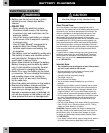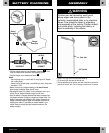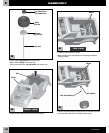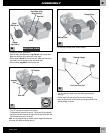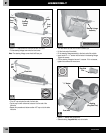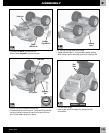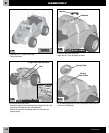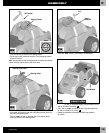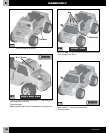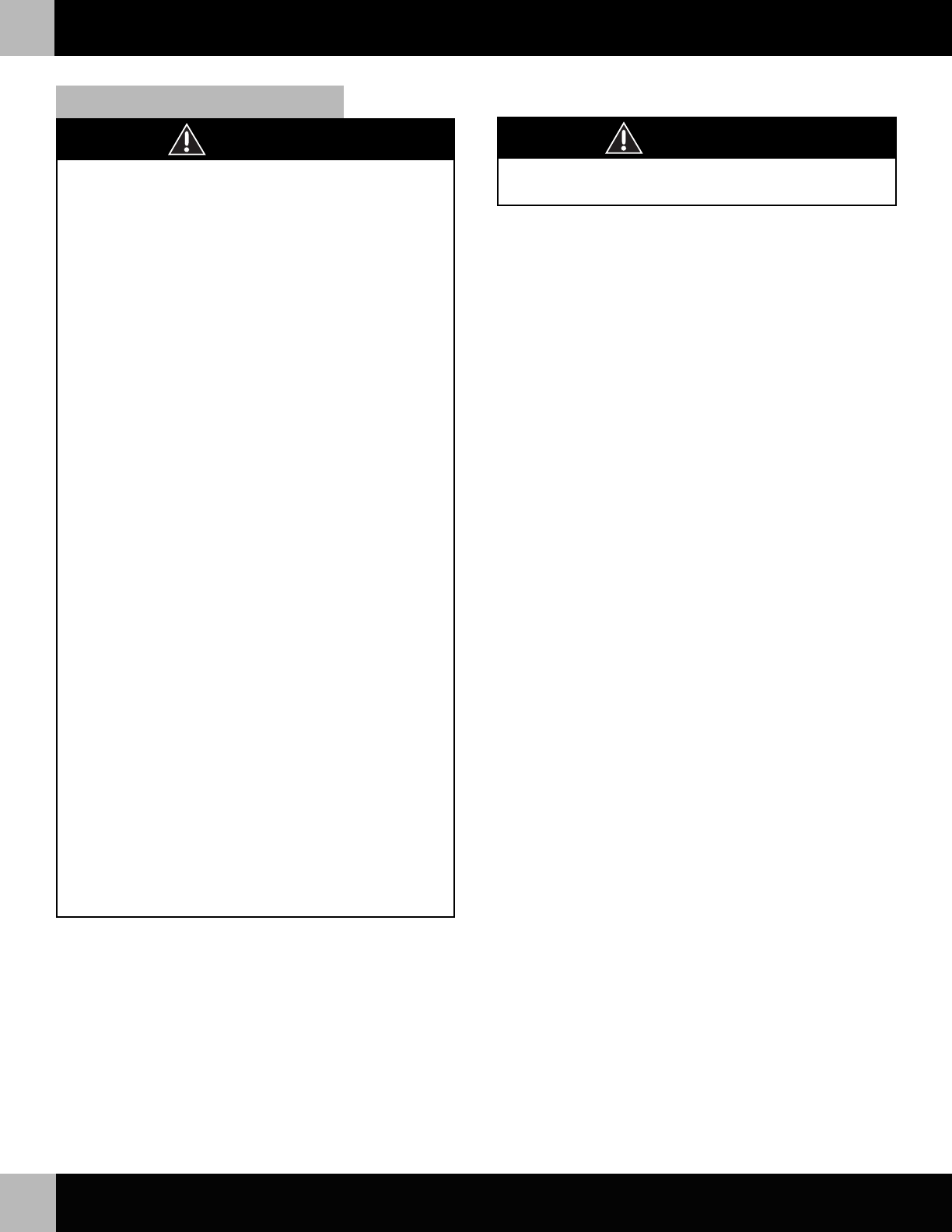
8
BATTERY CHARGING
E
K3033a-0920
Use the charger in dry locations only.
ELECTRICAL HAZARD
Important Notes
• Your new battery must be charged for at least 18 hours before
you use it in your vehicle for the first time.
• We recommend that you start charging your battery before
beginning assembly of your new vehicle.
• The battery must be upright while charging.
• The charger is not a toy.
• Do not short circuit the battery.
• You do not need to remove the battery from your vehicle to
recharge it.
• Before charging the battery, examine the battery case for cracks
and other damage which may cause sulfuric acid (electrolyte) to
leak during the charging process. If damage is detected, do not
charge the battery or use it in your vehicle. Battery acid is very
corrosive and can cause severe damage to surfaces it contacts.
• Do not charge the battery on a surface (such as a kitchen counter
top) which could be damaged by the acid contained inside the
battery. Take precautions to protect the surface on which you
charge your battery.
• Use only a Power Wheels
®
6 volt charger with an A-style connector
(input 120 VAC, 60 Hz, 15W with an output of 6 VDC, 7.2W) to
charge your Power Wheels
®
6 volt battery.
Adults Note: Regularly examine the charger for damage to the
cord, plug, housing or other parts that may result in the risk of fire,
electric shock or injury. In the event of any damage, do not use
the charger until the damage has been properly repaired. Please
call 1-800-348-0751.
• If your battery is old and will not accept a charge, do not leave it in
the vehicle. Always remove a dead battery from the vehicle.
About Thermal Fuses
Your Power Wheels
®
6 volt battery is equipped with a built-in
thermal fuse. The thermal fuse is a self-resetting safety device which
automatically “trips” and shuts down operation of the vehicle if the
vehicle is overloaded or the driving conditions too severe. Once
a fuse has “tripped”, remove your foot from the pedal and wait
approximately 25 seconds before operating the vehicle again.
To avoid repeated automatic shut-downs, do not overload the vehicle
by exceeding the 65 lb. (29.5 kg) maximum weight capacity or by
towing anything behind the vehicle. Avoid severe driving conditions,
such as driving up slopes or running into fixed objects, which can
cause the wheels to stop spinning while power is still being supplied
to the motors and make sure your child stops the vehicle before
switching direction.
If a thermal fuse in a battery continually trips under normal driving
conditions, please contact your local Power Wheels
®
Authorized
Service Center. For the location of the Authorized Service Center
nearest to you, visit us on-line at www.powerwheels.com,
or call 1-800-348-0751.
• Battery can fall out and injure a child if
vehicle tips over. Always use battery
retainer.
• PREVENT FIRE
- Never modify the electrical system.
Alterations could cause a fire resulting
in serious injury and could also ruin the
electrical system.
- Use of the wrong type battery or charger
could cause a fire or explosion resulting
in serious injury.
- Use of Power Wheels
®
components in
products other than Power Wheels
®
vehicles could cause overheating, fire
or explosion.
• The battery must be handled by adults only.
The battery is heavy and contains sulfuric
acid (electrolyte). Dropping the battery
could result in serious injury.
• Never allow children to charge the battery.
Battery charging must be done by adults
only. A child could be injured by the elec-
tricity involved in charging the battery.
• Never lift or carry the battery by the wires
or connector. This can damage the battery
and possibly cause a fire resulting in
serious injury. Lift and carry the battery
by the case only.
• Read the safety instructions on the battery.
• Examine the battery, charger and their
connectors for excessive wear or damage
each time you charge the battery. If
damage or excessive wear is detected, do
not use the charger or the battery until you
have replaced the worn or damaged part.
WARNING
CAUTION



